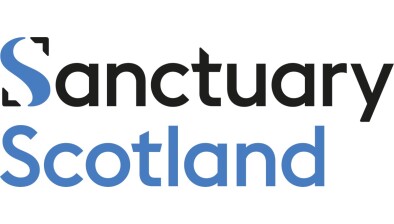Blog: Temporary accommodation in Scotland: where are we now, and where do we go from here?

What is the state of play for temporary accommodation in Scotland? In this blog, Dr Beth Watts reflects on a new I-SPHERE report and where to go next.
A new I-SPHERE report examines the use of temporary accommodation (TA) in Scotland. The research was commissioned by Social Bite on behalf of the Homelessness and Rough Sleeping Action group (HARSAG), and informed recommendations made by the group to Scottish Government regarding how to transform temporary accommodation.
Almost 11,000 households are currently living in TA in Scotland, double the number in 2003. Numbers peaked in 2010/11 but if the gradual upward trend we’ve seen over the last few years continues, we’ll see that surpassed soon.
Simple narratives can be irresistible, but these trends speak to two equally valid truths.
First, that Scotland has worked extremely hard to build a robust safety net available to those experiencing homelessness. Temporary accommodation is invaluable in providing people with a place to stay while longer-term options are found and the surge in the numbers in TA post-2003 reflects the radical expansion in people’s entitlement to help following legislative reform in the early 2000s.
Second, that this uniquely strong safety-net isn’t working well enough and is in urgent need of reform. A look at the detail in our new report, based on analysis of official data and interviews with sector experts, helps explain why.
While around 60% of households in TA are accommodated in self-contained social rented sector accommodation, over a quarter are still staying in Bed and Breakfast (B&B) or Hostel accommodation. It is these kinds of accommodation that sector experts – and a host of other research and evidence – suggest are often not of an adequate standard.
While local authorities have tried to move away from using B&Bs, and their use has dropped by a third since 2010, over 1,100 households stay in B&Bs at any one time, and areas of high housing pressure like Edinburgh struggle to find alternatives. This is in a context where there is a strong consensus that B&Bs lack the facilities and support that people need:
“we are still using B&B and I think that needs to be looked at… The quality, being of poor quality, no access to washing facilities, cooking facilities, furnishing being of a poor standard. I think it’s unsuitable… living in one room… I don’t think that’s appropriate in this day and age in terms of people’s health and wellbeing.”
(Local authority key informant)
The numbers living in hostels has soared over the same time period, with almost 1,700 households now in this kind of temporary accommodation. In some local authorities (Perth and Kinross, Dundee and Inverclyde) half or more of households in TA are accommodated in hostels. In a handful of local authorities, single people stay in hostels for an average of 200-300 days. It’s widely acknowledged that the quality of these hostels is highly variable, depending on the building condition and level of support:
“the hostel side of thing I think is possibly the most mix of all of it, you know, because you’ve got some organisations that get the concept of psychologically informed environments, get how hostels can work on a small scale if they’re purpose built and designed and built in the right fashion. But most hostels are still provided in buildings that have been adapted for the purposes and are still plodding nicely doing the same thing that they were doing when George Orwell was down and out in London and Paris. And that’s simply not good enough actually.”
(Homelessness expert)
Other issues highlighted by the report include the high cost of temporary accommodation. Most TA is funded via means-tested Housing Benefit, and this creates an enormous challenge for those seeking to sustain or move into paid employment.
We identify a clear way ahead to transform the nature of temporary accommodation in Scotland.
First, national leaders need to set a clear vision for TA in Scotland, articulating the standards it should reach, while recognising the highly differentiated challenges that will face different local authorities in meeting that vision.
Second, a reformed funding regime for TA is required that provides adequate funds to maintain TA at a sufficient standard and with appropriate support. This funding mechanism should be designed to facilitate positive outcomes for TA residents, and eliminate the current ‘poverty trap’ that makes it hard for those in TA to sustain or move into employment.
Third, core to TA transformation must be reducing demand for it, by preventing homelessness more effectively and by increasing exits from TA into appropriate housing. The recent context of rapid legal reform and policy innovation in this area in England and Wales – in particular, the new prevention obligations and duties on other public services to work to address homelessness – offers useful insights for Scotland to inform a new approach that combines the best of these models with its own uniquely strong homelessness legislation.
The next phase of the research will focus on six local case studies, to explore the strategies local authorities use, and the dilemmas they face, in providing TA, and the experiences of residents. It will be published in Autumn 2018.
Temporary Accommodation in Scotland: Interim Report was authored by Mandy Littlewood, Beth Watts and Janice Blenkinsopp, and commissioned by Social Bite on behalf of the Homelessness and Rough Sleeping Action Group.
This article was originally published on the I-SPHERE website.









